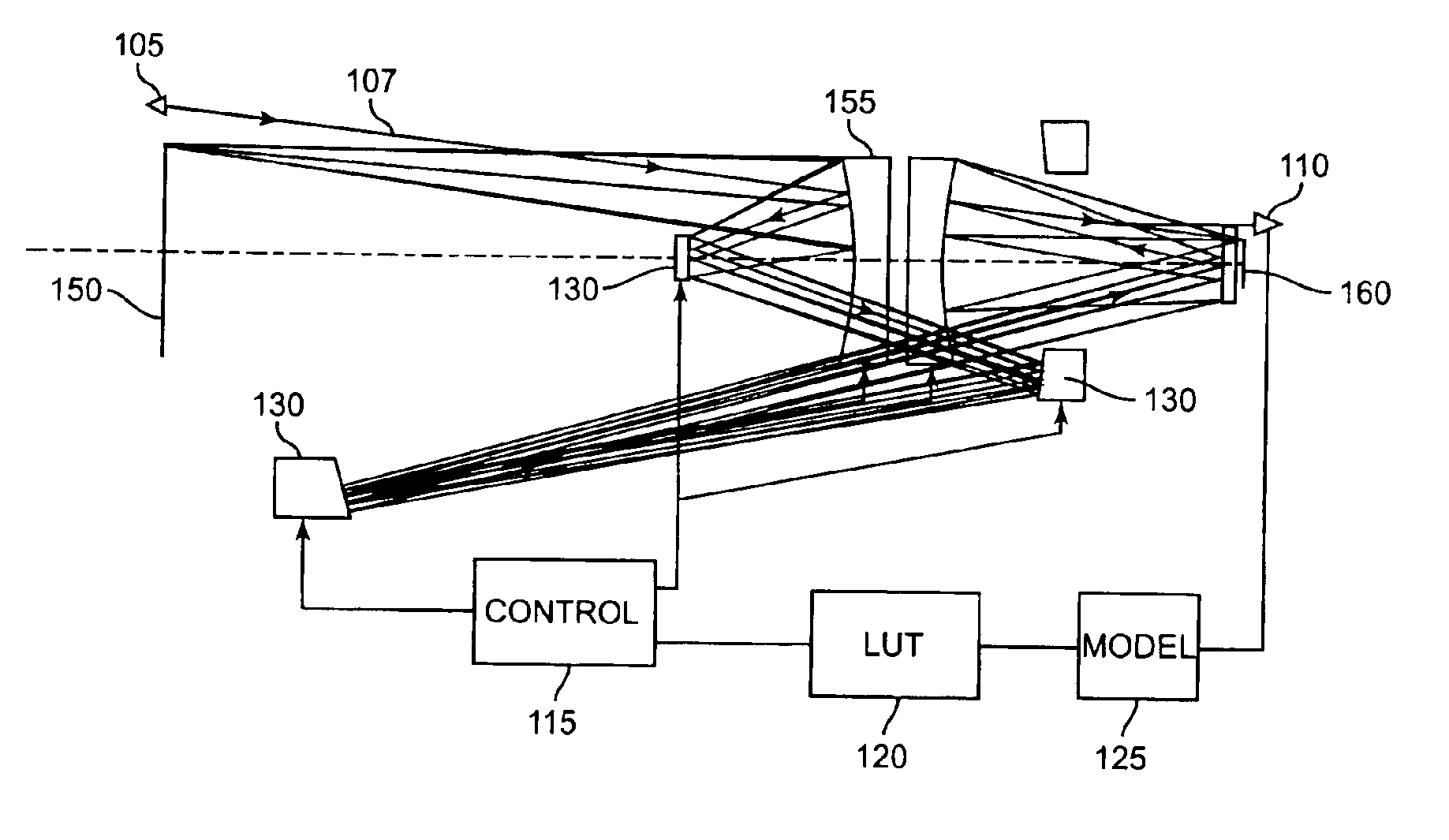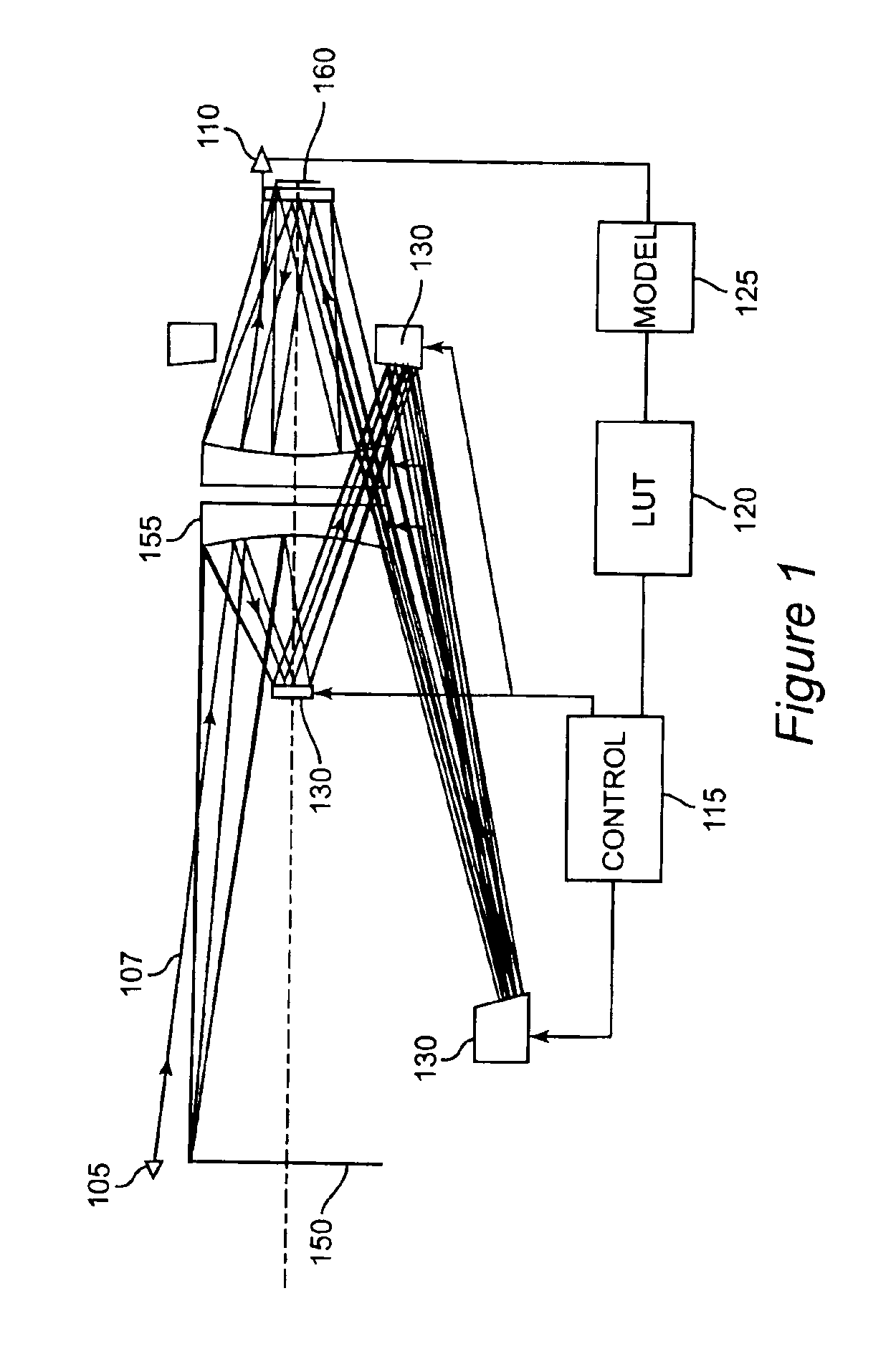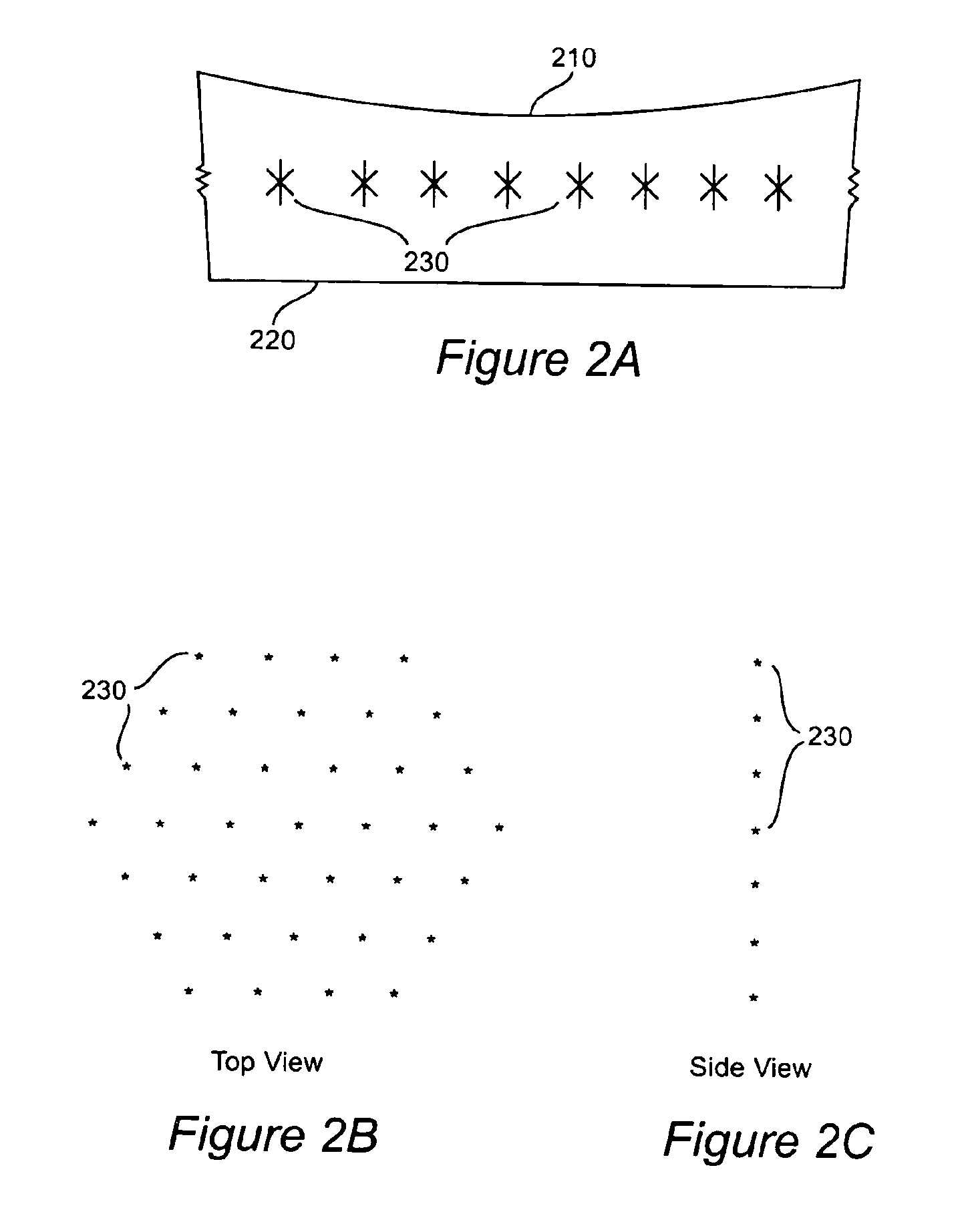Adaptive optic with discrete actuators for continuous deformation of a deformable mirror system
a mirror system and actuator technology, applied in the field of high-precision lithography exposure systems, can solve the problems of reducing size, reducing the efficiency of lithography exposure, and reducing the size of reticles for electron beam projection, so as to achieve the effect of optimizing optical performan
- Summary
- Abstract
- Description
- Claims
- Application Information
AI Technical Summary
Benefits of technology
Problems solved by technology
Method used
Image
Examples
Embodiment Construction
[0020]Referring now to the drawings, and more particularly to FIG. 1, there is shown an exemplary catoptic optical system with which the invention may be employed. All optical elements of this system are reflective and thus this optical system is suitable for projection of EUV wavelengths or for use in any reflective element of any optical system. The illustrated optical system is suitable for image projection of a pattern established by the reticle 150 via a pupil 155 onto a target such as a resist-coated wafer 160. It should be further noted that this optical system is relatively complex; including six mirrors and having a tortuous optical path among the elements and principally off-axis which, itself, may give rise to significant aberrations.
[0021]In accordance with the invention, adaptive optics may be employed for any or all elements of the optical system of FIG. 1 or any similar system having reflectors for all elements thereof and thus capable of projecting an image using EUV...
PUM
| Property | Measurement | Unit |
|---|---|---|
| wavelengths | aaaaa | aaaaa |
| wavelength | aaaaa | aaaaa |
| fluid pressure | aaaaa | aaaaa |
Abstract
Description
Claims
Application Information
 Login to View More
Login to View More - R&D
- Intellectual Property
- Life Sciences
- Materials
- Tech Scout
- Unparalleled Data Quality
- Higher Quality Content
- 60% Fewer Hallucinations
Browse by: Latest US Patents, China's latest patents, Technical Efficacy Thesaurus, Application Domain, Technology Topic, Popular Technical Reports.
© 2025 PatSnap. All rights reserved.Legal|Privacy policy|Modern Slavery Act Transparency Statement|Sitemap|About US| Contact US: help@patsnap.com



